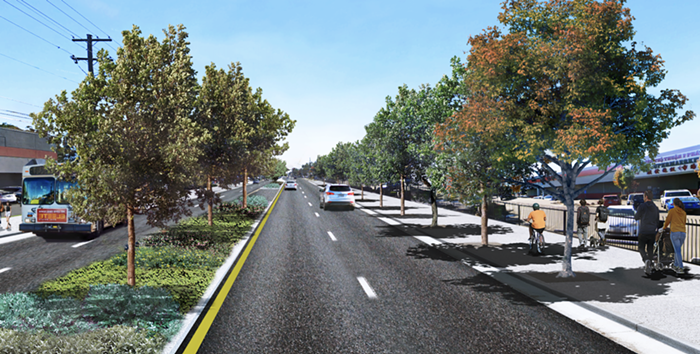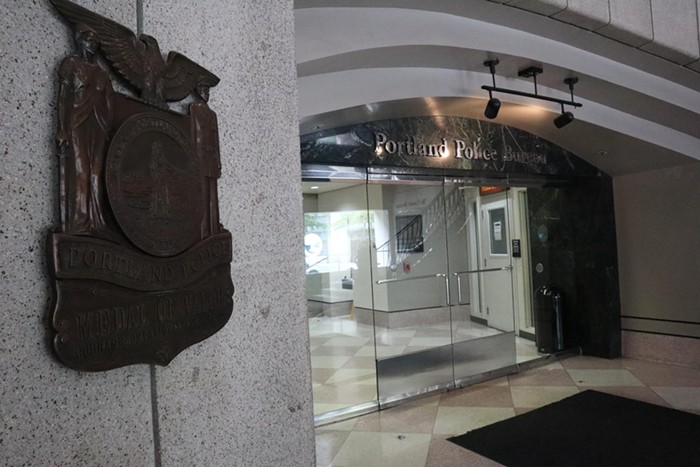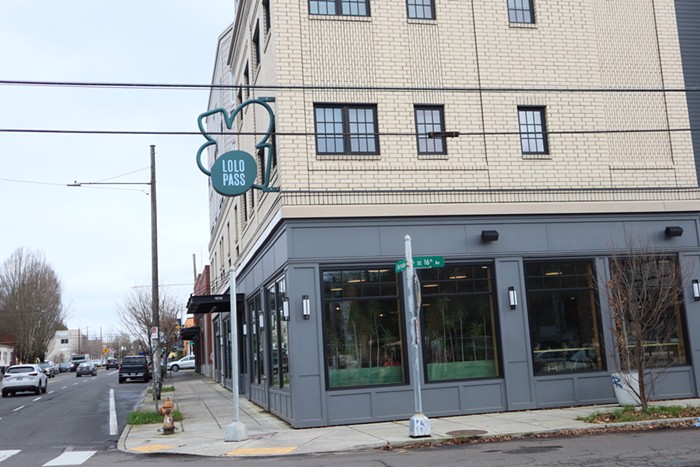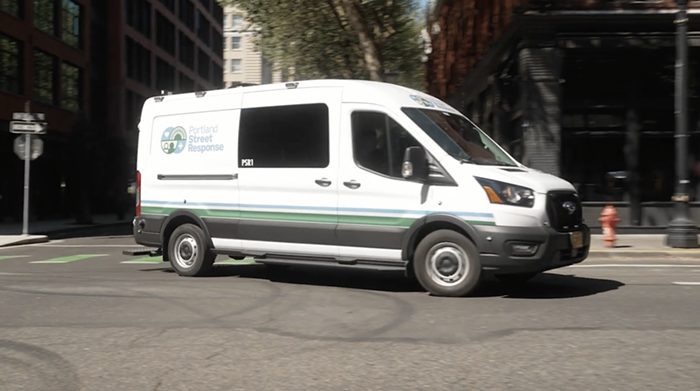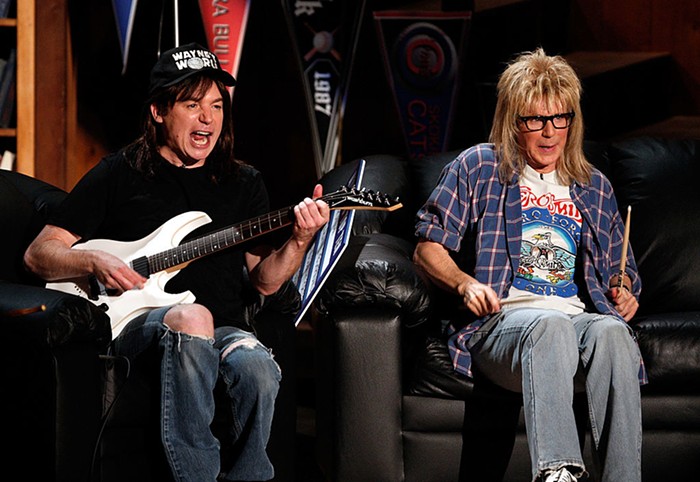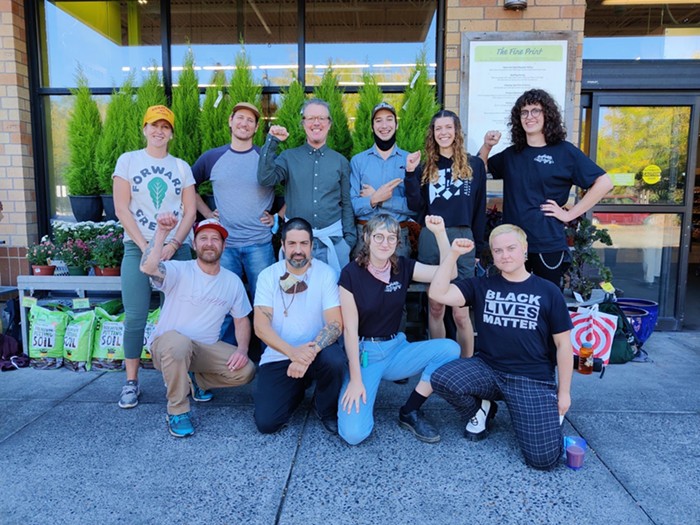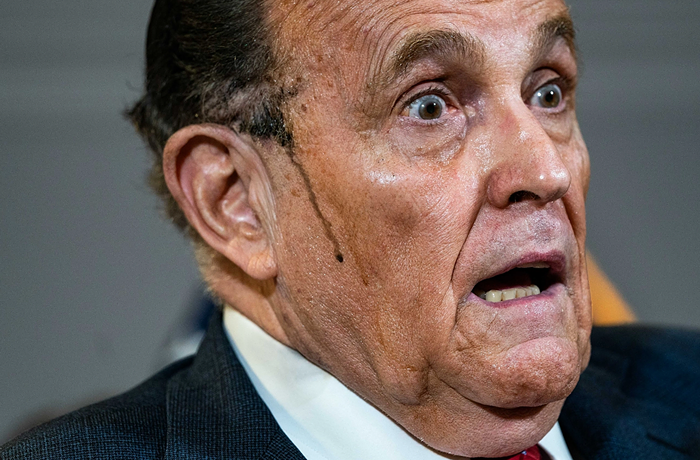
This morning, Portland City Council voted to mark at least 1,600 buildings in Portland with an 8-by-10-inch plaque.
These labels will be affixed on an outer wall near the building's entryway and will read (in at least 30-point bold type): "This is an unreinforced masonry building. Unreinforced masonry buildings may be unsafe in the event of a major earthquake."
Most buildings will be required to attach these placards to their buildings by March 1, 2019.
The plaques themselves are unremarkable. But it's what the small sign signifies that has sent ripples of opposition across Portland's small-scale property owner community. Many believe the label could turn away cautious tenants, customers, or parishioners (38 of the building are churches). Others call it the "Scarlett letter," and fear the plaque will make their building tricker to refinance or take out a second mortgage on the building.
The ordinance also mandates building owners include information about their buildings' safety issues in future leases. It's an unfair punishment, owners argue, for not being able to afford the cost of a seismic upgrade to ensure their old brick building won't collapse on itself during an earthquake.
"This is an obligation to Portland's 10-year-olds... those who aren't at the table today," said Commissioner Dan Saltzman before voting in favor. "I understand this is no easy task to building owners. But earthquakes are not produced by the city, they are produced as an act of god or a natural disaster. We can't do anything about the seismic risks we face... and I certainly don't think it's the city's obligation to fund the seismic improvements. I sympathize, but it's not our responsibility."
Portland's Black community has expressed particular concern with the placarding requirements. While Black property owners don't question a URM's safety issues during an earthquake, many see this labeling system—which appears to disproportionately impact older buildings owned by Black Portlanders—as a way to further disenfranchise the city's small population of color.
In a letter sent to city council in August, NAACP Portland President E. D. Mondaine Jr. compares the labeling of earthquake-unsafe buildings to the city's decision to label more than 150 African American-owned buildings in the Albina neighborhood as "blighted" in the 1960s—an incredibly vague label that allowed the city to enforce eminent domain and demolish all buildings.
"It is the hope of the NAACP Portland Branch that the City Council recalls the long history of racist tactics, including publicly shaming African Americans, and creating policies and processes that have intentionally excluded the African American community from the decision-making process," writes Mondaine. He notes that several building owners weren't told that their buildings were URMs until after this placard policy was voted on by city council in the summer.
At a hearing before city council last week, Mondaine and fellow Black community leaders called on the city to halt the placarding program and start the entire URM policymaking process over—only this time, making sure the African American community was involved.
"We've been displaced so many times," said Mondaine. "There are two things for sure you can count on about the African American community and public policy, usually: It's that we're the first affected and the last informed."
At the same council meeting, Commissioner Chloe Eudaly said she's concerned that this policy has pitted public safety against private profit.
"I have to say to the building owners, the stakeholders include your tenants, your employees, your customers, your parishioners," Eudaly said. "I'm really nervous about kicking this down the road another few years. I really want us to do right by everyone, but I think it's going to hurt a little no matter what we do."
Today's vote is one step in a lengthy debate over what responsibilities owners of "unreinforced masonry buildings," or URMS, have to keep the public safe.
In June, members of council decided to extend the deadline of when URM owners are mandated retrofit their roofs—which entails tightly securing roofs to a building's outside walls—to 20 years. Roof retrofits are the only seismic building upgrade to URMs required by the city, since so many building owners say they won't be able to afford a full building overhaul (estimated costs range from $43 to $105 per square foot). The roof fixes still costs at least $33 per square foot.
The government doesn't offer much in the way of financial support for these upgrades. Some URMS are old enough to qualify for a federal tax credit given to owners of "historically designated" buildings who retrofit their property. That credit covers 20 percent of the total retrofit cost. A state law offers 15 years of property tax exemptions to people who own buildings built before 1993 and chose to seismically retrofit their building.
Some owners believe it'll be more cost effective for them to just demolish their unsafe buildings and sell the land.
“I truly believe that 50 percent of these buildings are going to disappear, because who can afford this?” URM homeowner Angie Even told the Mercury earlier this year.
Meanwhile, earthquake experts say the required roof retrofit might not even be worth it. A building will need a full seismic retrofit to truly withstand a major earthquake, according to Oregon State University geophysics professor Christopher Goldfinger.
"It winds up being sort of an experiment. It might not do anything at all,” he told the Mercury in May. “It doesn’t sound very effective at all, to be honest.”
The council is expected to vote on the measure by noon. Follow along here.


